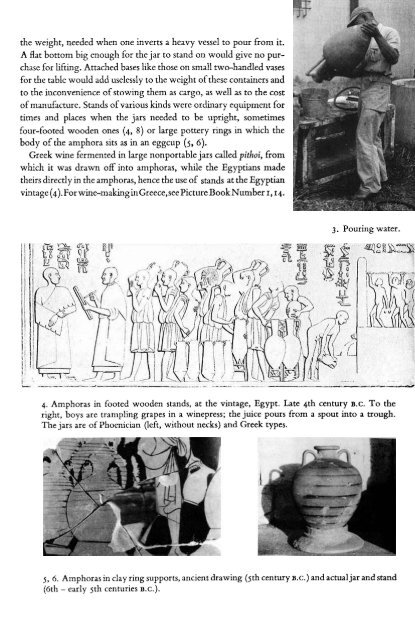Create successful ePaper yourself
Turn your PDF publications into a flip-book with our unique Google optimized e-Paper software.
the weight, needed when one inverts a heavy vessel to pour from it.A flat bottom big enough for the jar to stand on would give no purchasefor lifting. Attached bases like those on small two-handled vasesfor the table would add uselessly to the weight of these containers andto the inconvenience of stowing them as cargo, as well as to the costof manufacture. Stands of various kinds were ordinary equipment fortimes and places when the jars needed to be upright, sometimesfour-footed wooden ones (4, 8) or large pottery rings in which thebody of the amphora sits as in an eggcup (5,6).Greek wine fermented in large nonportable jars called pithoi, fromwhich it was drawn off into amphoras, while the Egyptians madetheirs directly in the amphoras, hence the use of stands at the Egyptianvintage (4). For wine-making inGreece, see Picture Book Number I, 14.3. Pouring water.4. Amphoras in footed wooden stands, at the vintage, Egypt. Late 4th century B.C. To theright, boys are trampling <strong>gr</strong>apes in a winepress; the juice pours from a spout into a trough.The jars are of Phoenician (left, without necks) and Greek types.5, 6. Amphoras in clay ring supports, ancient drawing (5th century B.c.) and actualjar and stand(6th - early 5th centuries B.c.).











